


|
|
||||||||||||
|
|
||||||||||||
|
|
|||
|
|
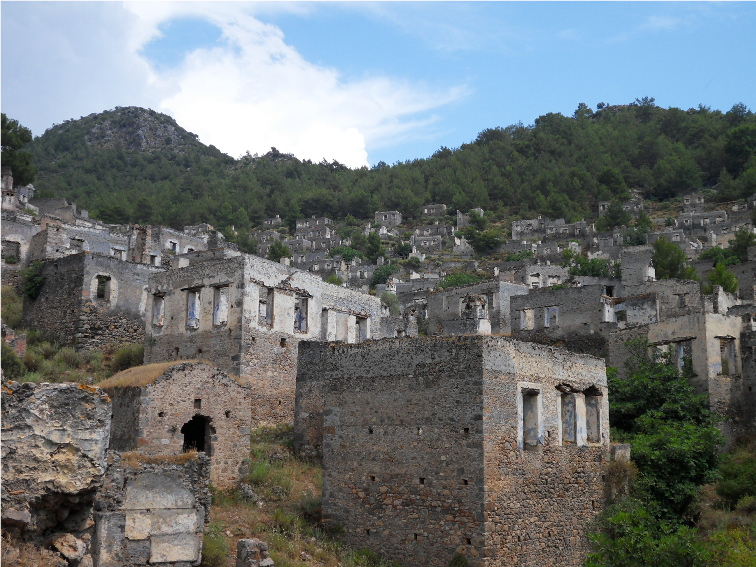
Until 1923, Kayaköy – also known as Levissi - was a thriving village with a population of several thousand people: Today it is a ghost town with deserted houses, shops, schools and churches. Dating back to antiquity the area was first inhabited in approximately 3,000 BC and was the location of the ancient city of Carmylessus, which at its height had a population of about 20,000 people: It was to remain an important trading city until 1100 AD. Kayaköy was built on the site of Carmylessus in the 18th century; with the existing buildings being constructed in the second part of the 19th century and first quarter of the 20th. Kayaköy or Karmylassos, as it was called in Greek, had been continually inhabited since at least the 13th century. In fact the Turks and Greeks had lived together in the region dating back to at least the 1st century BC with the Turks maintaining the fields and the Greeks provided the trades and craftsmen. Located 8 km south of Fethiye in southwest Turkey it was inhabited by Greek speaking Christians until they were required to vacate the area by the population exchange agreement signed by the Greek and Turkish governments after the Greco-Turkish War of 1919-1922. This required that the entirely Greek residents of Kayaköy were to leave their homes and to be taken to Greece where they were re-housed in a town called Nea Levissi (New Levissi), a poor suburb outside of Athens. The Turks who had been brought to Kayaköy from Northern Greece were farmers and moved down to the plains while others being unaccustomed to the climate and living conditions, moved to other parts of Turkey within the first year, leaving the place abandoned. The site is notable for being devoid of the normal trappings of tourism with virtually no information boards or signs and no guides wanting to show you round and tell you about the place. Yet the atmosphere is as heavy as any of the more famous places one can visit in Turkey and knowing the background as to why it was deserted and the heartache of people having to leave their home can create an impression on all but the hardest visitor. The visit starts by climbing up the hillside along the cobbled streets with the ruined stone wall houses. There are about 400 houses in the town each approximately 50 metres square. They are positioned so as not to over shadow one and other and to allow each to have a view over the valley. Scattered among the houses, are numerous chapels, a school, a customs house and two large churches. At the top of the hill is one of the two churches with its ceiling still displaying the faint outline of frescoes. On the walls can be seen the stone carvings and engaged columns and the remains of the blue colouring that was used to adorn them; while the entrance still contains the remains of the mosaics covering the floor. Over the period of time any timber in the buildings has either been removed or rotted away exposing the building’s interior and the remnants of the coloured walls, while vegetation has sprouted from within the buildings giving it a deserted and forgotten feel. Today Kayaköy is preserved by UNESCO as a World Friendship and Peace Village, and exists as an open air museum which could make tourism an increasingly important aspect of the lives of the local residents. Each year many of the Greek descendants of those expelled in 1923 return for a ceremony of remembrance and reconciliation. It has been suggested that the village will be partially restored to make it more of a tourist attraction so perhaps it is somewhere to visit now before that happens and it becomes commercialised, thus losing some of its atmosphere. 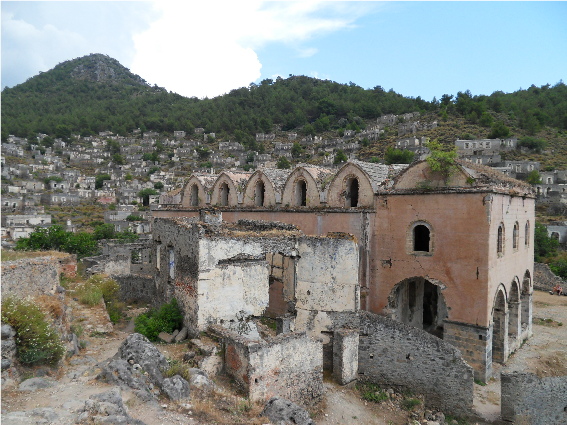 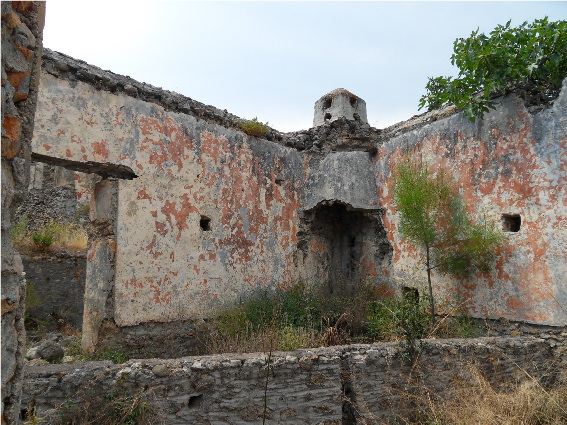 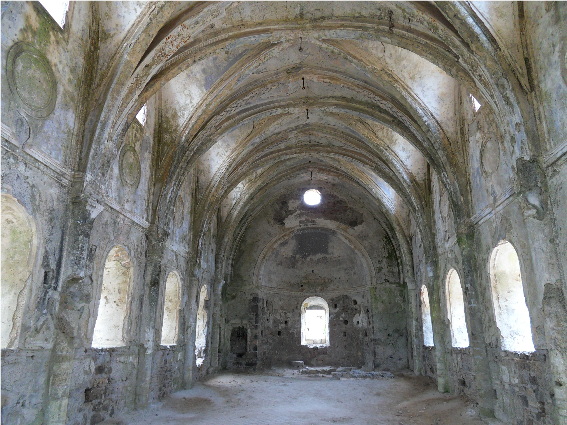 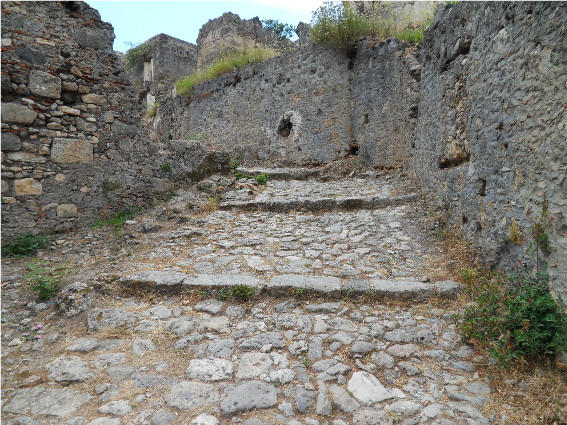 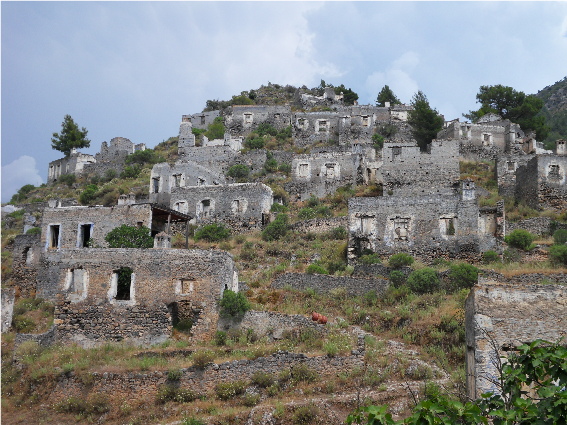 To see more photographs and take a virtual tour of the site click on the photoshow below. |
|
|
|
|
|||
All Photographs were taken by and are copyright of Ron Gatepain
| Site Map |